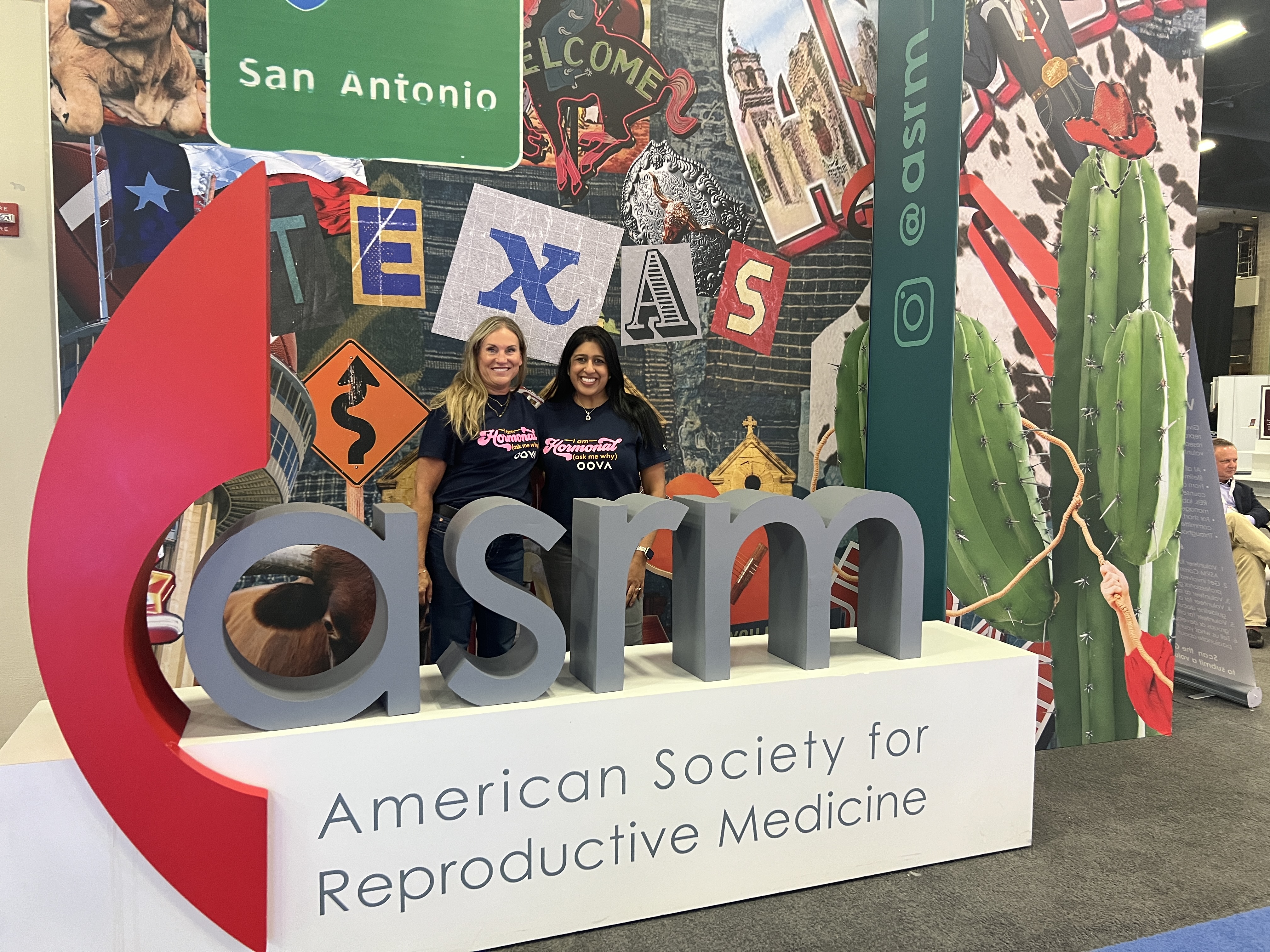What the world's top fertility experts revealed in San Antonio about IVF success rates, egg quality, and your path to parenthood.

What the world's top fertility experts revealed in San Antonio about IVF success rates, egg quality, and your path to parenthood.
This October, the Oova team joined thousands of reproductive specialists at The American Society for Reproductive Medicine (ASRM) 2025 Annual Meeting in San Antonio, where the theme "Equity, Access, and Innovation" brought together the latest breakthroughs in reproductive medicine. With over 2,000 fertility professionals sharing cutting-edge research, we left with hope-filled insights that could transform your fertility journey.
Here are the five most exciting takeaways that actually matter for your path to parenthood.
1. IVF Success Is at an All-Time High (And Getting Better)
The Numbers Don't Lie: 2025 data shows pregnancy rates of up to 45% per transfer for optimal patient groups, with some leading clinics using AI-driven embryo selection achieving 60-70% accuracy in predicting embryo viability!
What This Means for You:
- If you're under 35: 40-55% live birth rate via IVF
- Frozen embryo transfers now show comparable or slightly higher success rates than fresh transfers (30% across all age groups)
- Most couples achieve pregnancy within 2-3 cycles
Action Step: Don't give up after one cycle. The cumulative success rate increases significantly with each attempt.
2. Your Partner's Sperm Health Matters More Than You Think
The Surprising Truth: Male factors contribute to 40-50% of infertility cases, yet many men never get properly tested beyond a basic semen analysis. New research shows sperm DNA fragmentation testing can reveal hidden issues even when standard tests look normal.
Key Findings:
- Infertile patients show DNA fragmentation levels of 32.77% compared to 22.19% in fertile donor.
- High fragmentation is linked to lower fertilization rates, poor embryo development, and early miscarriage.
- Good news: Lifestyle changes can improve sperm quality within 3-6 months.
What Your Partner Can Do Today:
- Quit smoking and limit alcohol
- Add antioxidants (vitamin C, E, zinc, omega-3)
- Keep cool (no hot baths, tight clothing)
- Consider DNA fragmentation testing if you've had multiple failed cycles
3. The Truth About Egg Quality: It's Not Just About Age
Beyond the Numbers: While age matters, new research shows that pre-IVF incubation in specialized media for just 3-6 hours can improve egg maturation rates and embryo development regardless of your age.
Breakthrough Strategies:
- Personalized stimulation protocols based on your genetic profile show 10% improvement in egg quality
- New vitrification (rapid freezing) techniques have revolutionized egg preservation with better survival rates
- Diet matters: Mediterranean diet patterns and CoQ10 supplements show real promise
Remember: Quality over quantity. Women under 38 have good success rates even with just 3-6 eggs retrieved.
4. Mosaic Embryos: When "Abnormal" Isn't Always Bad News
The Gray Area: Not all embryos are perfect, some contain both normal and abnormal cells (mosaics). New data shows low-level mosaic embryos (20-40% abnormal cells) can still result in healthy babies.
What Research Shows:
- For women over 42, transferring mosaic embryos may give better outcomes than another IVF cycle.
- Many healthy children have been born from mosaic transfers
- Recent studies question whether PGT-A testing improves outcomes for all patients.
Your Options: If you only have mosaic embryos, don't despair. Genetic counseling can help you understand your specific risks and make an informed decision.
5. The Future Is Here: AI, At-Home Testing, and Personalized Protocols
Technology Meets Fertility:
- AI-powered embryo selection is improving implantation rates
- CRISPR gene editing and I-Womb technology are in research phases
- At-home hormone monitoring (like Oova!) helps optimize timing without daily clinic visits
Personalization Is Key:
- Your stimulation protocol should be tailored to YOUR body
- Genetic testing isn't one-size-fits-all
- Track your unique hormone patterns for better outcomes
Read: The Complete Guide to Navigating Infertility Treatment
The Bottom Line: Hope Based on Science
With 95,860 babies born from IVF in 2023 (up from 91,771 in 2022), assisted reproduction is more successful than ever. The key is finding the right approach for YOUR unique situation.
Three Things to Remember:
- Success takes time - Most couples need 2-3 cycles
- Both partners matter - Male fertility is half the equation
- Knowledge is power - Understanding your hormones gives you control
At Oova, we believe in empowering you with precise, at-home hormone tracking so you can optimize your fertility journey, whether you're trying naturally or with assistance.
Ready to take control? Start tracking your fertile window with Oova!
About the author

Sources
Information based on presentations at the American Society for Reproductive Medicine 2025 Meeting, October 25-29, 2025, San Antonio, TX.
- ASRM 2025 Scientific Congress & Expo. American Society for Reproductive Medicine, 25-29 Oct. 2025, San Antonio, TX.
- Chian, Ri-Cheng, et al. "The Quality of Human Eggs and Its Pre-IVF Incubation." Reproductive Medicine and Biology, vol. 24, 2025, doi:10.1002/rmb2.12652.
- "IVF Success Rates in 2025: Latest Research and Clinical Evidence." The Wellness London, 4 Sept. 2025.
- "Mosaic Embryo Transfer versus Additional IVF with PGT-A Cycle." Journal of Assisted Reproduction and Genetics, 2024.
- Zurera-Egea, Coral, et al. "The Utility of Sperm DNA Fragmentation as a Diagnostic Tool for Male Infertility." International Journal of Molecular Sciences, vol. 26, no. 13, 2025.
About the Oova Blog:
Our content is developed with a commitment to high editorial standards and reliability. We prioritize referencing reputable sources and sharing where our insights come from. The Oova Blog is intended for informational purposes only and is never a substitute for professional medical advice. Always consult a healthcare provider before making any health decisions.

.jpg)

